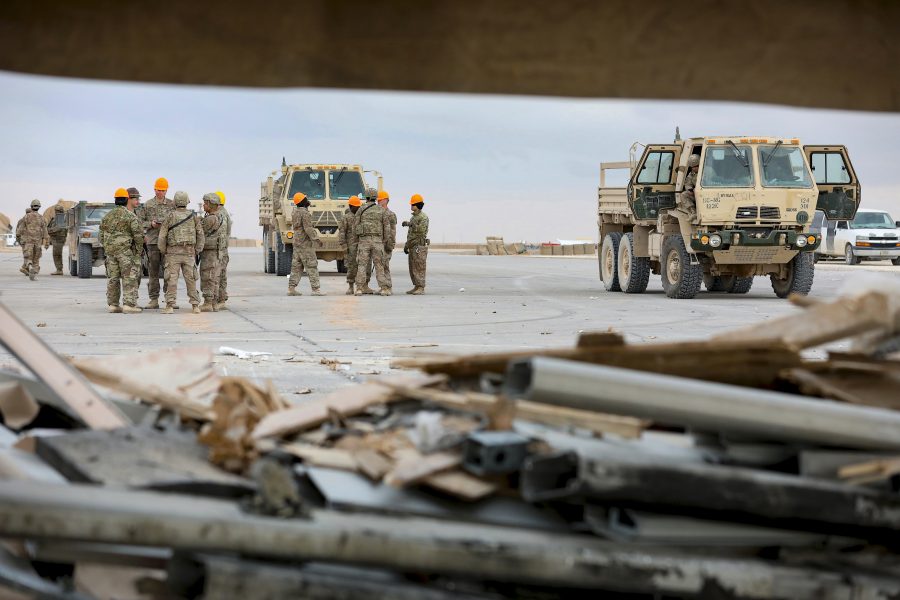The Pentagon now says 34 service members sustained brain injuries in the Jan. 7 Iranian ballistic missile attack on al-Asad AB, Iraq. The Defense Department has launched a review of how it tracks and reports injuries.
Of the 34 service members who sustained injuries in the attack, 17 were evacuated to Landstuhl Regional Medical Center in Germany for additional care and nine of those troops were taken back to the US—to either Walter Reed National Military Medical Center or their home bases for continued, outpatient care. Eight troops remain in Germany. One other service member was taken to Kuwait for care and has returned to duty, Pentagon spokesman Jonathan Hoffman said during a Jan. 24 briefing.
Sixteen service members at al-Asad were diagnosed with concussions and remained at the base. They also have returned to duty, Hoffman said.
President Donald Trump on Jan. 22 downplayed the injuries, saying “I heard that they had headaches, and a couple of other things. … I can report, it is not very serious.”
But the number of injuries is significantly higher than the department’s original reporting, which initially claimed zero injuries and then later updated that to only a handful of TBIs.
Hoffman said the increase stems from the nature of the immediate response to the attack, with the priority being on identifiable, physical injuries, and the length of time it takes for TBI symptoms to develop.
The department is not identifying the units or service branches involved, Hoffman said.
In response to the attack and ensuing confusion, Defense Secretary Mark Esper directed Matt Donovan, who is performing the duties of the under secretary of defense for personnel and readiness—to conduct a review alongside the Joint Staff on how the Pentagon tracks and reports injuries in incidents such as the Jan. 7 attack.
“The goal is to be as transparent and accurate as possible, and provide the American people and service members the best information,” Hoffman said.
